Search the Special Collections and Archives Portal
Search Results

Julian Eusebio oral history interview: transcript
Date
Archival Collection
Description
Oral history interview with Julian Eusebio conducted by Cecilia Winchell, Jerwin Tiu, and Stefani Evans on June 01, 2022 for the Reflections: the Las Vegas Asian American and Pacific Islander Oral History Project. In this interview, Eusebio discusses his childhood in the Philippines countryside, helping his parents farm and harvest rice. After moving to Manila for college, Eusebio studied architecture and illustrated for comics and magazines. After moving to Los Angeles, California, Eusebio started a construction business, doing landscapes and constructing swimming pools for celebrities such as Michael Jackson. In 1992, he opened another branch in Las Vegas, Nevada. After retiring in 2010, Eusebio took up painting again and cites his favorite artists as Norman Rockwell and Rembrandt. In the remainder of the interview, he discusses his drawing process and how he started showing his artwork throughout the Las Vegas Clark County Library District.
Text

Transcript of interview with Cynthia Cicero, Tina Boag, Betty Brown, and Jan Ravetti by Claytee D. White, March 28, 2014
Date
Archival Collection
Description
Text

Transcript of interview with Sharon and Henry Hwang by Stefani Evans and Claytee D. White, February 21, 2017
Date
Archival Collection
Description
Text
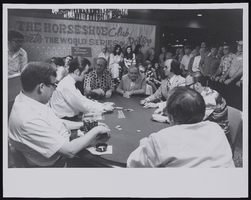
Photograph of Benny Binion and others playing poker, Las Vegas (Nev.), circa 1980
Date
Archival Collection
Description
Benny Binion seated at poker table with his hands folded and facing camera. The photograph being taken during Horseshoe World Series of Poker circa 1980.
Image
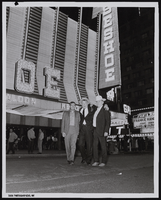
Photograph of three men standing in front of the Binion's Horseshoe Casino, Las Vegas, Nevada, 1968
Date
Archival Collection
Description
Chill Wills (center) and Benny Binion (right) standing on Fremont street in front of the Horseshoe Hotel & Casino. (1968) . Stamp on back of photo: "Allen Photographers. Inc. Post Office Box 4253 Las Vegas, Nevada 89106". Date stamped "April 17, 1968".
Image
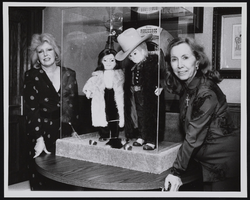
Photograph of people posing with dolls, Las Vegas (Nev.)
Date
Archival Collection
Description
Teddy Jane Binion at right. Standing by a display depicting cowboy and cowgirl dolls in front of the $1,000,000 Binion's Horseshoe. (n.d.)
Image
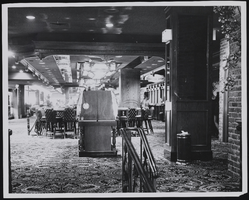
Photograph of slot machines and tables inside the Horseshoe Casino, Las Vegas (Nev.)
Date
Archival Collection
Description
Horseshoe Casino interior. (no date)
Image
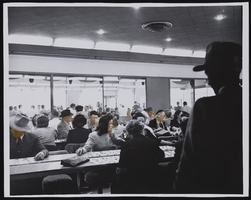
Photograph of bingo players inside the Horseshoe Casino, Las Vegas (Nev.), 1940-1959
Date
Archival Collection
Description
Guests sit in the Horseshoe Club in rows and play Bingo together. Some of the clearly-visible faces of participants have a golden/brown circle on top of them.
Image
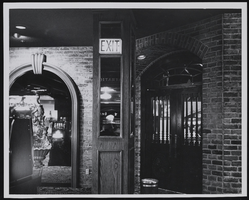
Photograph of slot machines and the casino exit, Las Vegas (Nev.)
Date
Archival Collection
Description
Slot machines and a trashcan are visible in this interior image of the Horseshoe Hotel & Casino, with the exit on the right.
Image
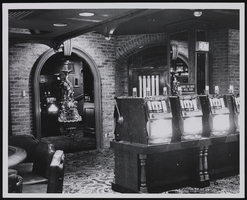
Photograph of slot machines inside the Horseshoe Casino, Las Vegas (Nev.)
Date
Archival Collection
Description
Horseshoe Casino-interior-slot machines in view. (no date)
Image
